Be Found Part 2! A Short (But Exhaustive) Guide to Local SEO in Montreal
TL;DR:
- Claim and optimize: Google My Business, Bing Places & Apple Maps
- Build listings/citations on online directories & review sites
- Optimize your website with proper keywords
- Add schema markup to your pages
- Optimize your website for mobile
What is local SEO?
Local search optimization (LSO) is the practice of improving visibility for a specific geo-targeted area. It targets a local market, allowing businesses to increase traffic, leads and brand awareness. LSO can be traced back to 2003-2005 when search engines tried to provide users with results in maps.
LSO differentiates itself from broader SEO which prioritizes relevance over distance. LSO has evolved over the years into a targeted marketing approach that allows local businesses to appear in maps and in local search results based on a range of signals.
Why Local SEO matters?
- 46% of all Google searches are local
- 88% of all consumer local searches result in either calling or visiting the local business
- Over 50% of local retailers have not claimed their Google My Business listing
LSO is still a mostly untapped tactic. Current lack of understanding of LSO’s best practices and widespread poor execution makes it an effort with a high ROI. Chances are that your most active competitors are not tapping into the local clientele in an efficient matter. Centered around tried and tested marketing tactics, this article will demystify the notion of LSO optimization and will outline a simple, 5 step plan that will help you create more visibility and exercise a degree of market control.
Paid ads vs Google’s Local ‘Snack Pack’ vs Organic Results
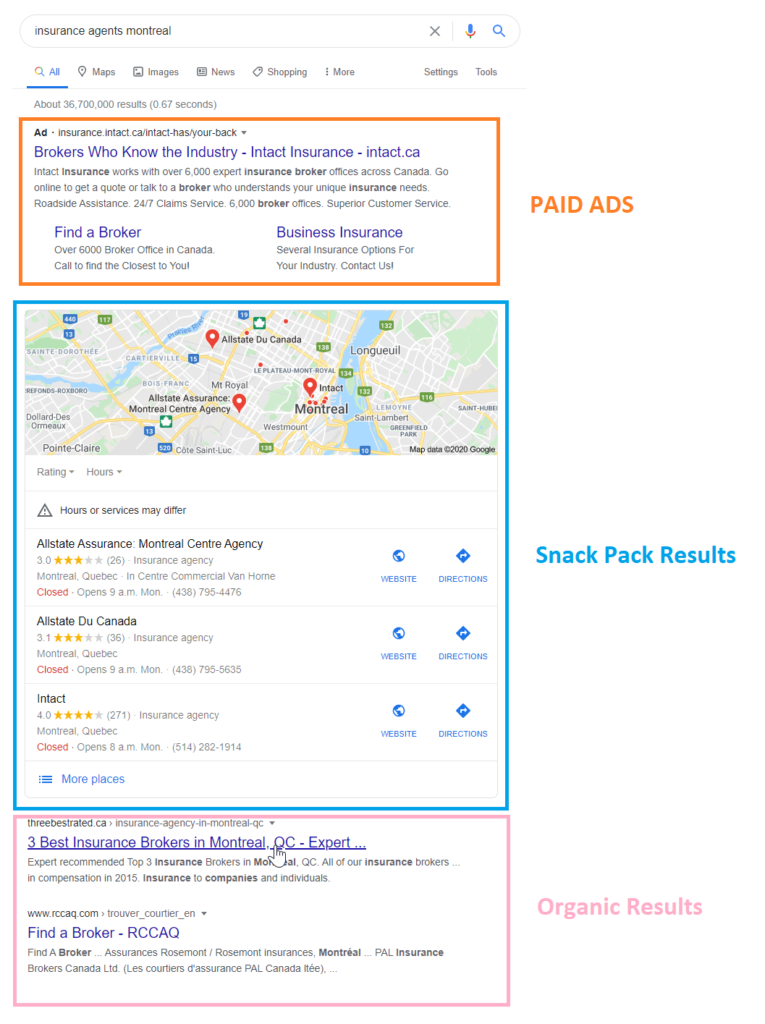
Google snack pack also referred to as the “3 Pack” is a Google Map search result that appears on the 1st page of search engine results pages (SERP) and that displays the top 3 local business listings most relevant to the search inquiry.
SEO studies identified positive correlations between local rankings and following ranking factors, of which GMB reviews and optimisation were the most important one:
- GMB reviews: the number of reviews and the overall star rating.
- GMB factors: presence of opening hours, links, pictures, posts, services, products etc.
- The quality of citations: consistency & low number of duplicates.
- The presence of a keywords in the business name.
- Structures data: ‘LocalBusiness’ markup etc.
- Backlinks.
- Long content.
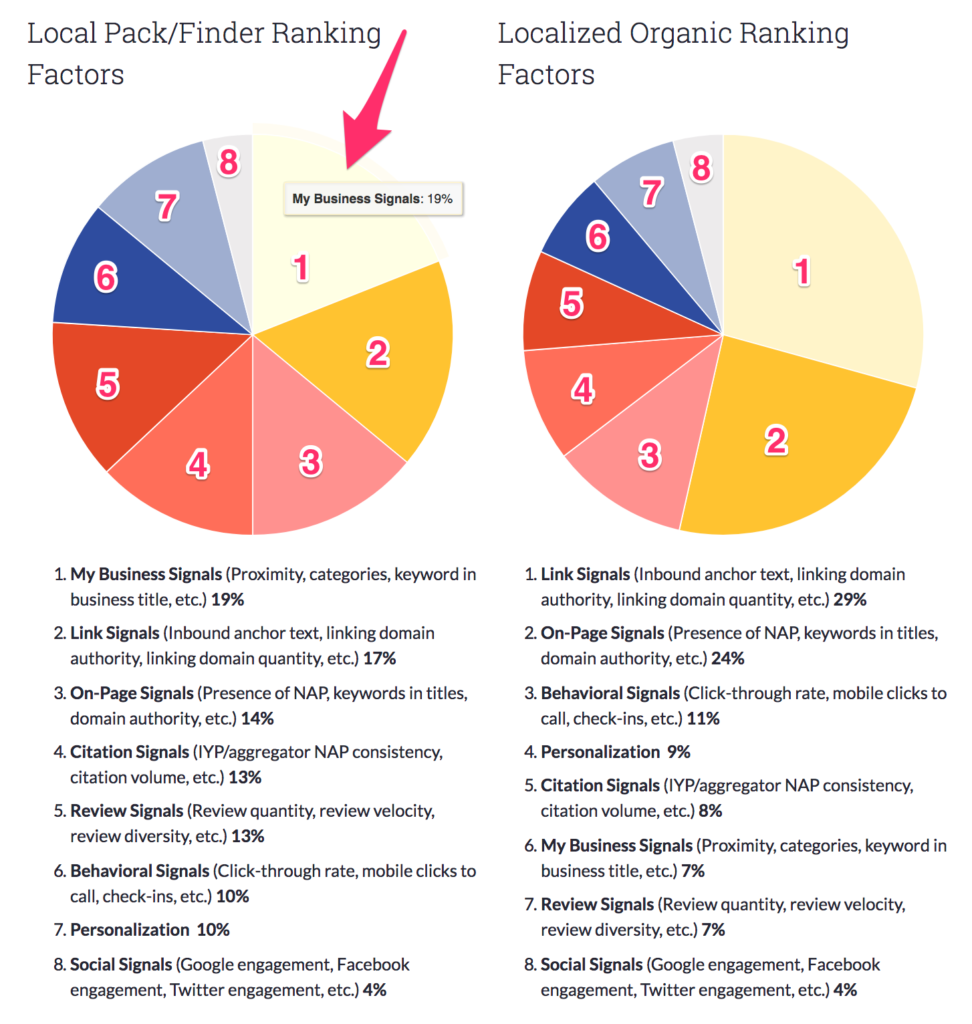
Source: neilpatel.com
Part 1. Google My Business, Bing Places, and Apple Maps Listings
Google My Business (GMB) is a free tool that allows businesses with a physical location to create and manage the information that appears on Google Maps or in search engine results pages (SERP). Claiming and optimizing your GMB listing is the most important part of LSO, however Bing Places and Apple Maps listings are important as well.
Setting these up is pretty easy — just follow the instructions offered by Google/Bing/Apple.
1.1. Google My Business
GMB is one of the top local ranking factors for both organic results and “snack pack”.
To set it up, click on this link here, and follow these steps.
- Enter your business name
- Enter your address
- Enter your exact location with a map and a location pin.
- Choose a category
- Enter your phone number and website
- Verify your listing via phone, email or postcard.
- Optimize your listing:
- Add your opening hours;
- Add any individual services you offer;
- Add a description of your business
- Add links to your contact page, your main menu, more categories;
- Upload photos
- Etc.
1.2. Bing Places
Bing Places is equivalent of GMB but has a much much smaller market share. It only takes a few minutes to set up the profile and it’s something you should do.
- Make sure that you’re not already listed!
- Go to Bing Maps and start typing your business name in the search bar. If you’re already listed, you will see your business name appear in the search results. If you are listed you can claim/modify/add your business.
- Select Business Type
- Choose a your category
- Add website, phone, Facebook, Twitter, Yelp, TripAdvisor etc.
- Upload Photos
1.3. Apple Maps
Apple Maps is the default maps application on iPhone. It is estimated that Apple’s iPhone has a 33% market share in North America. Apple Maps is also built into Siri and Spotlight searches, so it is smart to claim and optimize your Apple Maps listing here.
- Visit: mapsconnect.apple.com and log in with your Apple ID and password.
- Enter your basic details also known as NAP (the business name, address, and phone). It is important that this data match exactly to your Google business page and the NAP citations on your website.
- Verify your business phone number.
- Confirm your business location.
- Confirm your opening hours
- Add your company social media accounts and website
Part 2. Local Citations (NAP)
Citations are mentions of your business, which display your business name, address, and phone number, better known as NAP (Name, Address, Phone). Citation signals are one of the top local ranking factors, because consistent NAP information serves to further verify the data Google has on file and inconsistent NAP information, might misdirect both Google and potential customers.
Perform a Citation Audit
You can use Moz Local to check the main data aggregators in your country or BrightLocal (paid service). You will also have to perform a manual NAP a manual citation audit and cleanup. Basically you will search Google for citations with advanced search operators.
Here are a few operators you can use:
“Business name” + “partial address” -”correct phone number”
“Business name” + “correct phone number” -”partial address”
“Correct phone number” + “partial address” -”business name”
Here is a great post for MOZ that goes into detail about the manual citation audit process.
Build More Citations
Here are the top 62 Canadian business listing citations to get you started.
Some of them include:
- http://www.yellowpages.ca/
- http://www.bbb.org/
- http://www.yelp.com/
- http://www.canpages.ca/
- http://411.ca/
- http://www.yelp.ca/
- http://www.manta.com/
Part 3. Keyword Research & On-Page SEO
Local keyword research isn’t complicated. For most businesses, the primary keywords to target will be obvious. If you run a barbershop in Montreal people who will search for your services will probably type:
“barbershop Montreal”;
“barbershop near me”;
“best barbershop Montreal”
You can see what keywords your competitors rank for or you can use some of the many free keyword tools to help you kick-start your research with zero investment.
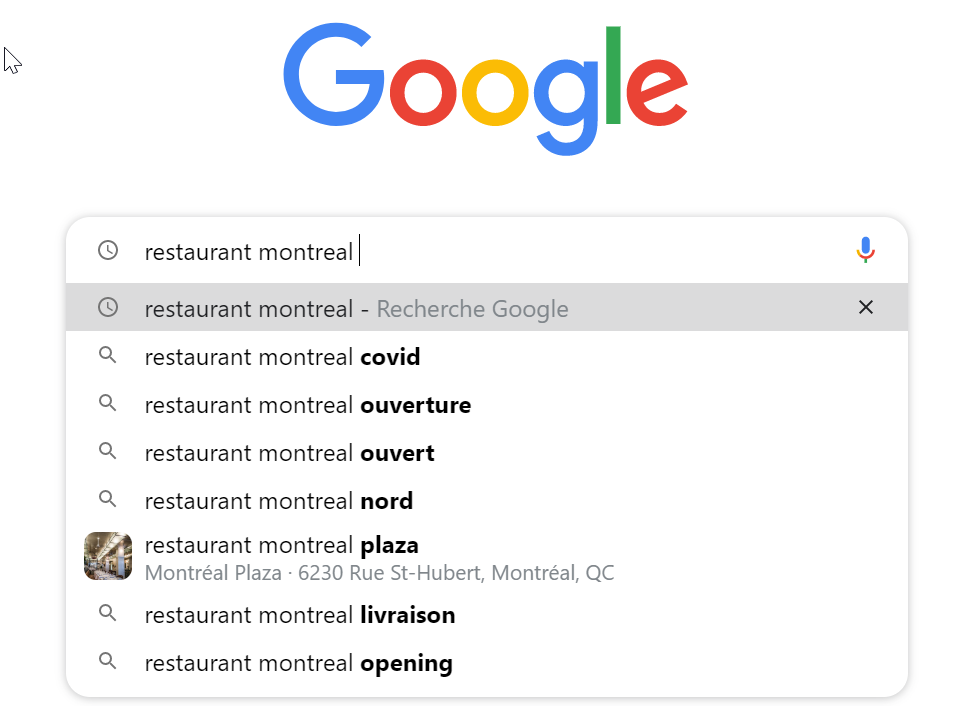
Google’s autocomplete feature can help you generate an almost infinite number of keyword ideas. You can also ask questions related to your business, click on any of these questions, and Google will load more:
Once you have identified important keywords add them into text headers, in URLs, into meta titles and descriptions of your pages.
Create a dedicated contact page and make sure you clearly show your “NAP:” Name, Address, Phone. I would also recommend adding your email and clickable phone number option for mobile devices
Part 4. Add Schema Markup to Your Pages
Schema markup is code that helps the search engines understand the content of your website. Websites that use schema markup will generally rank better in the SERPs than companies without markup and right now less then 10% of websites use schema markup.
Schema markup can generate rich results such as these:
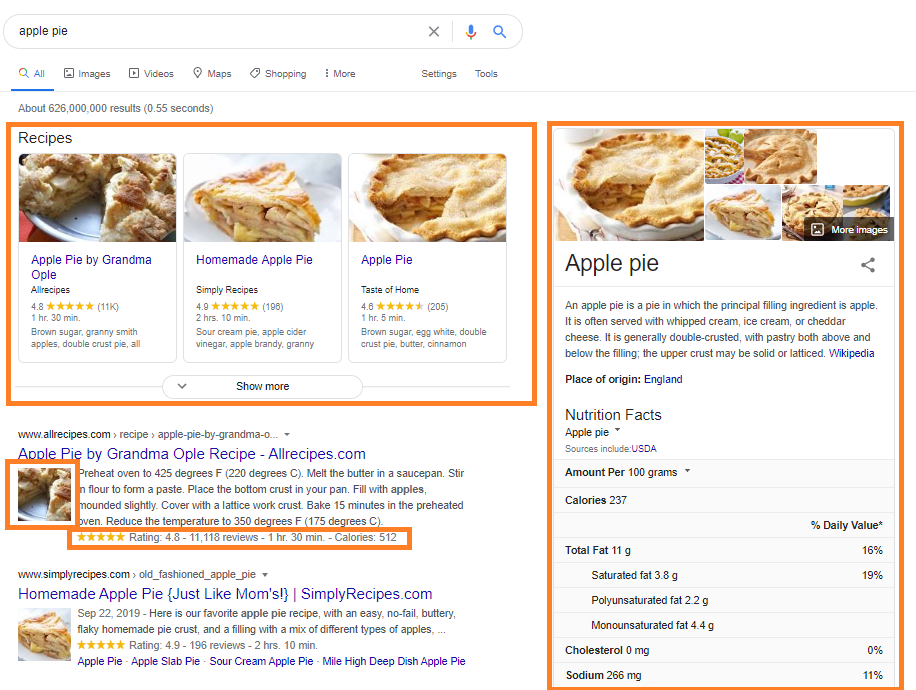
You can create the appropriate schema with Google’s Structured Markup Helper and import the code into the header of the page. Here is a great article by Neil Patel on how to create and implement schema on your website.
Here are the most common schema markup types
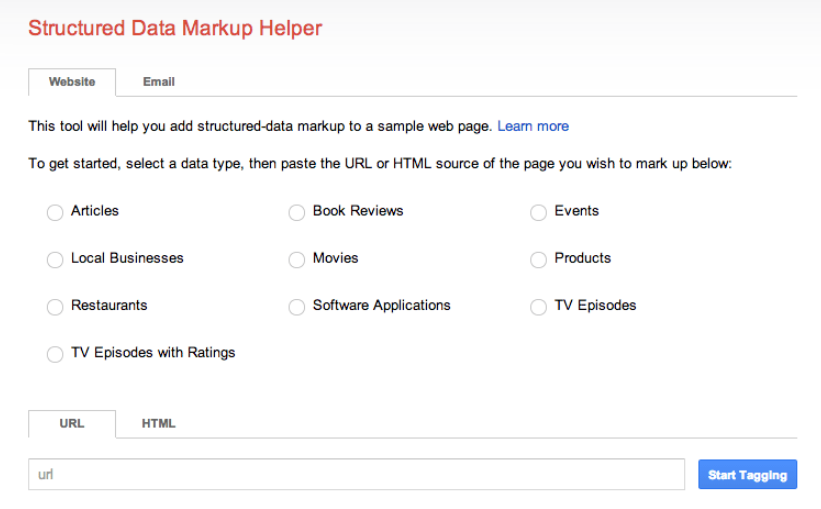
Chapter 5. Optimize for mobile
Local search is heavily weighted towards mobile. 61% of mobile searchers are more likely to contact a local business if they have a mobile-friendly site. Mobile optimization takes a look at site structure, design, page speed, and more.
You can use Google’s Mobile-Friendly Test tool to your website mobile friendliness. Because of connectivity, page speed is more important for mobile users than desktop users. Beyond optimizing images, you’ll want to leverage browser caching, minify code and reduce redirects. More information on mobile optimization can be found on the Google’s support page.
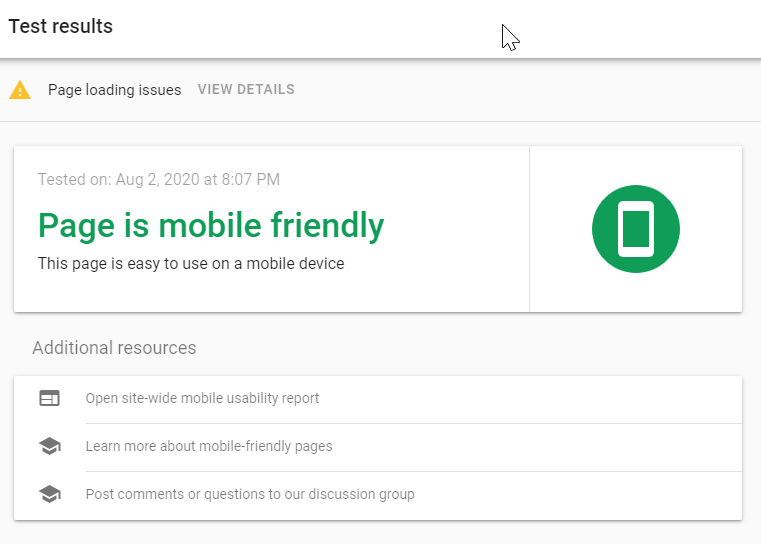
If you’d like to know more about SEO or LSO or if you are running a local business in Montreal we are here to help. Feel free to send us an email at contact@rushmediaagency.com

